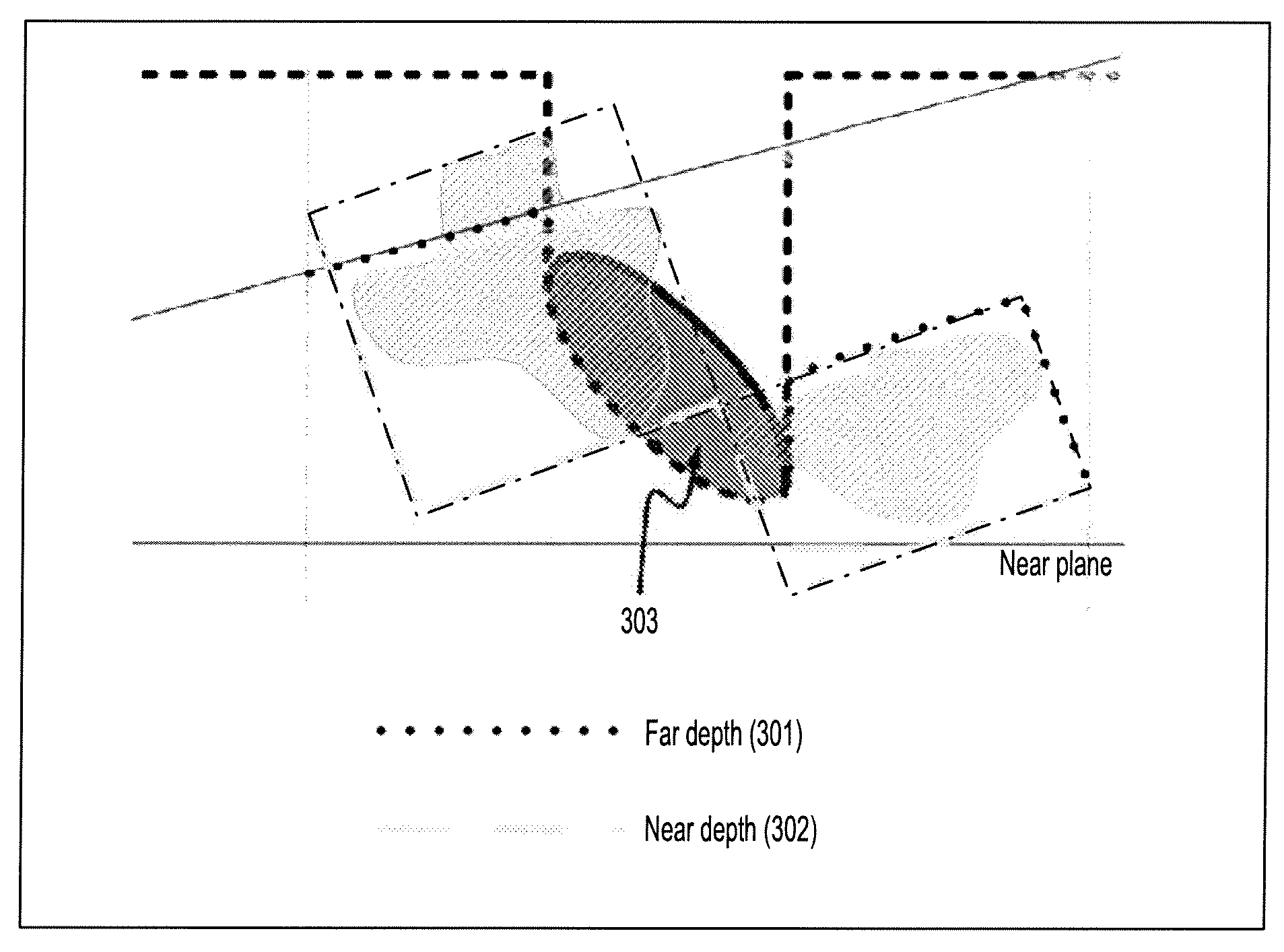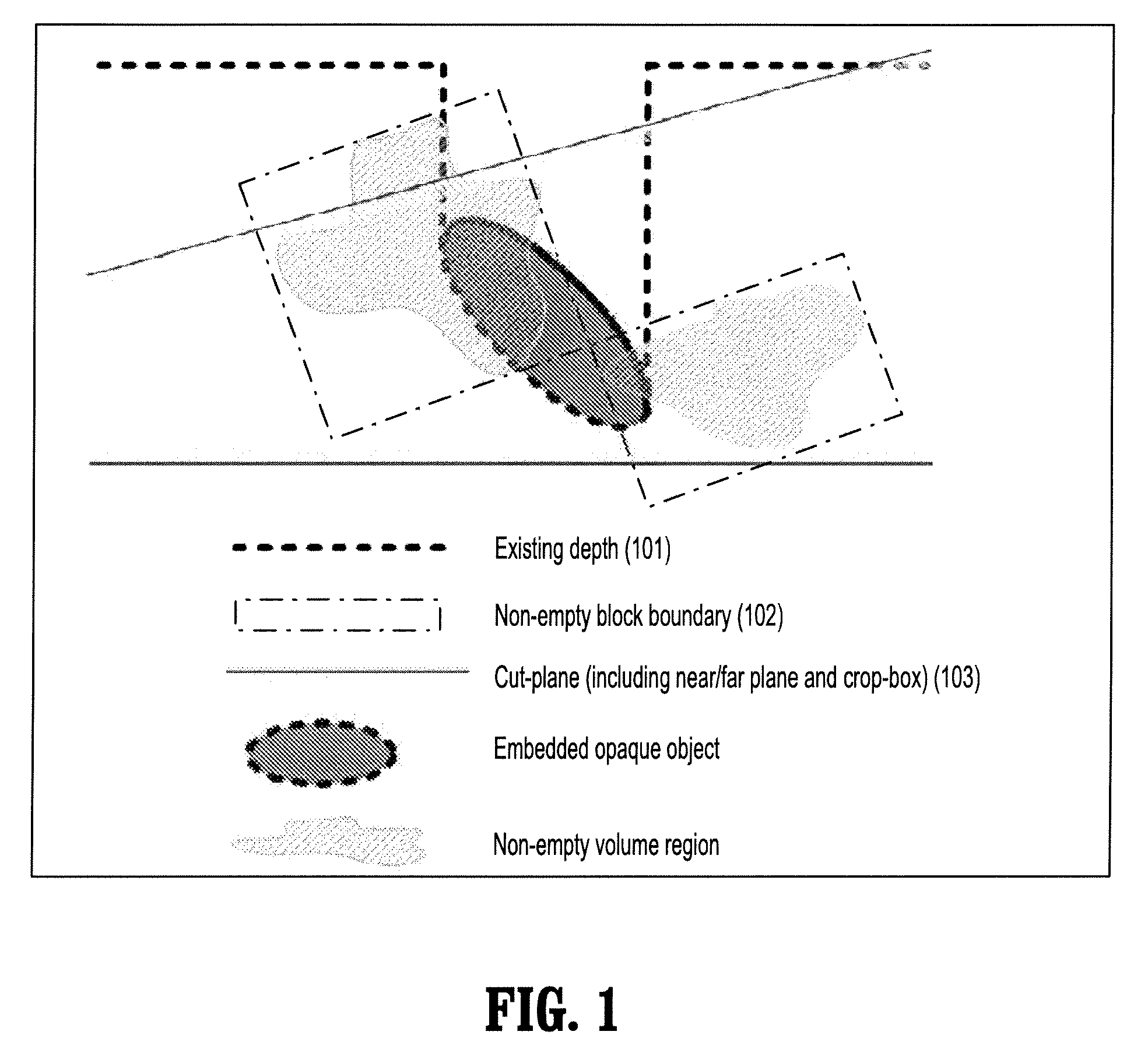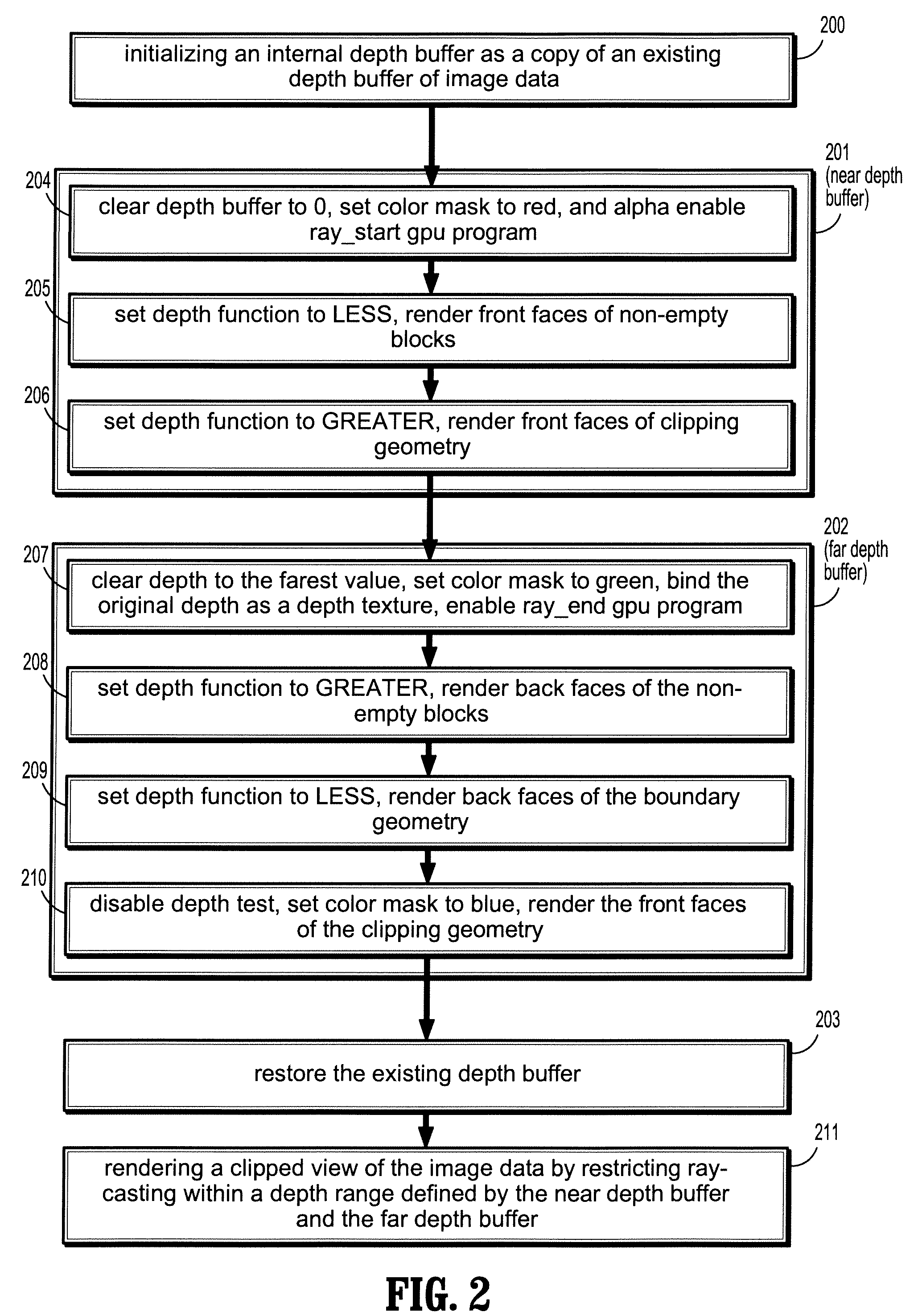Clipping geometries in ray-casting
a geometrie and ray-casting technology, applied in the field of image processing, can solve the problems of inability to pass plane parameters efficiently to the gpu shader, affecting the overall frame rate, and the per-sample cost inside the shader is increased, and won't work for ray-casting
- Summary
- Abstract
- Description
- Claims
- Application Information
AI Technical Summary
Problems solved by technology
Method used
Image
Examples
Embodiment Construction
[0021]An approach for supporting clipping geometries, such as cut-planes and crop-box in ray-casting, which is particularly suitable for graphics processing unit (GPU) based ray-casting—generating 2D images from a 3D scene (e.g., image data). Clipping geometries, bounding box of non-empty blocks, and depth buffer of embedded objects are rendered into a depth range buffer that specifies the start and end points of each ray. Clipping is then achieved by restricting ray-casting within the depth range or range layers. The clipping substantially avoids the cost of per-sample clipping tests and the inefficiency of passing clipping information into the ray-casting GPU program.
[0022]According to an embodiment of the present disclosure, a system and method is implemented for GPU-based ray-casting using a ray-caster that supports arbitrary number of clip-planes plus a volume-aligned crop-box. It also excludes volume samples falling behind embedded objects. Rendering cost inside GPU shader is ...
PUM
 Login to View More
Login to View More Abstract
Description
Claims
Application Information
 Login to View More
Login to View More - R&D
- Intellectual Property
- Life Sciences
- Materials
- Tech Scout
- Unparalleled Data Quality
- Higher Quality Content
- 60% Fewer Hallucinations
Browse by: Latest US Patents, China's latest patents, Technical Efficacy Thesaurus, Application Domain, Technology Topic, Popular Technical Reports.
© 2025 PatSnap. All rights reserved.Legal|Privacy policy|Modern Slavery Act Transparency Statement|Sitemap|About US| Contact US: help@patsnap.com



